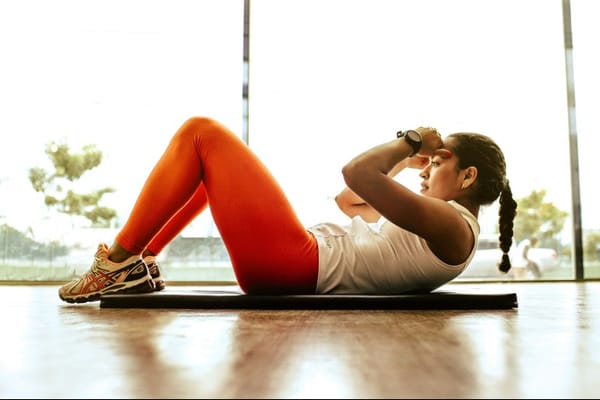Stretching has long been a topic of debate in the fitness world. Many people wonder whether they should stretch before exercising, after their workout, or if it's even necessary at all. This article will explore the importance of stretching, its benefits, and the best practices for incorporating it into your fitness routine.
The Importance of Stretching
Stretching is a crucial component of any well-rounded fitness regimen. It helps improve flexibility, range of motion, and overall physical performance. Regular stretching can also reduce the risk of injury and promote better posture[2][3].
Benefits of Stretching:
- Improved flexibility and range of motion
- Reduced risk of injury
- Enhanced athletic performance
- Better posture and body awareness
- Increased blood flow to muscles
- Stress relief and relaxation
Debunking Stretching Myths
There are several misconceptions about stretching that have persisted over the years. Let's address some of these myths and provide accurate information:
Myth 1: You should always stretch before exercising
Contrary to popular belief, static stretching (holding a stretch for an extended period) before a workout may not be beneficial and could potentially decrease performance[2]. Instead, dynamic stretching, which involves moving through a range of motion, is more appropriate for pre-workout routines.
Myth 2: Stretching prevents all injuries
While stretching can help reduce the risk of certain injuries, it's not a guaranteed prevention method. Other factors, such as proper form, gradual progression, and overall fitness level, also play crucial roles in injury prevention[4].
Myth 3: If you're not flexible, stretching isn't for you
Flexibility varies from person to person, and those who are less flexible may actually benefit more from regular stretching. It's important to start slowly and gradually increase the intensity and duration of stretches over time[3].
When to Stretch: Before, After, or Both?
The timing of stretching depends on your goals and the type of exercise you're performing. Here's a breakdown of when to incorporate different types of stretching:
Before Exercise:
Dynamic stretching is recommended before workouts to prepare your body for physical activity. This type of stretching involves moving parts of your body and gradually increasing reach, speed of movement, or both[2]. Examples include:
- Arm circles
- Leg swings
- Walking lunges
- High knees
Dynamic stretching helps increase blood flow, raise body temperature, and improve range of motion without compromising performance[4].
After Exercise:
Static stretching is more beneficial after a workout when your muscles are warm and pliable. Hold each stretch for 15-30 seconds without bouncing[3]. Post-workout stretching can help:
- Improve flexibility
- Reduce muscle tension
- Promote relaxation
- Enhance recovery
Throughout the Day:
Incorporating stretching into your daily routine, even on non-workout days, can help maintain flexibility and reduce muscle tension. This is especially important for those with sedentary lifestyles or jobs that involve prolonged sitting[3].
How to Stretch Safely and Effectively
To maximize the benefits of stretching while minimizing the risk of injury, follow these guidelines:
- Warm up first: Always perform a light cardiovascular activity for 5-10 minutes before stretching to increase blood flow and warm up your muscles[3].
- Focus on major muscle groups: Pay attention to areas that you use in your daily activities or sports, such as calves, thighs, hips, lower back, neck, and shoulders[3].
- Don't bounce: Bouncing during a stretch can cause small tears in the muscle, which can lead to tightness and injury[4].
- Hold static stretches: Maintain each stretch for 15-30 seconds for optimal benefits[3].
- Don't push too hard: Stretch to the point of mild tension, not pain. If a stretch hurts, ease up or stop[3].
- Stay consistent: Stretch regularly, at least 2-3 times per week, to maintain flexibility gains[3].
- Breathe normally: Don't hold your breath while stretching. Breathe slowly and naturally to help relax your muscles[4].
Types of Stretching
Understanding different stretching techniques can help you choose the most appropriate method for your needs:
- Static stretching: Holding a stretch for 15-30 seconds without movement.
- Dynamic stretching: Moving parts of your body through a range of motion repeatedly.
- Ballistic stretching: Using bouncing movements to push your body beyond its normal range of motion (generally not recommended due to injury risk).
- PNF (Proprioceptive Neuromuscular Facilitation): A more advanced technique involving stretching and contracting muscles.
- Active isolated stretching: Holding a stretch for 1-2 seconds and repeating 8-10 times.
Stretching for Different Activities
The type and intensity of stretching may vary depending on your chosen activity:
Cardiovascular exercise (running, cycling, swimming):
- Focus on dynamic stretches before the activity
- Perform static stretches for major muscle groups after the workout
Strength training:
- Incorporate dynamic stretches and mobility exercises in your warm-up
- Use static stretches post-workout, focusing on the muscles targeted during your session
Yoga or Pilates:
- These practices often include stretching as part of the routine
- Additional stretching may not be necessary, but listen to your body's needs
Team sports:
- Perform sport-specific dynamic stretches during warm-up
- Use static stretches during cool-down to promote recovery
Stretching for Special Populations
Certain groups may need to modify their stretching routines:
Older adults:
- Focus on gentle stretching to maintain flexibility and range of motion
- Pay extra attention to balance and stability during stretches
Pregnant women:
- Avoid stretches that require lying on the back after the first trimester
- Focus on gentle stretches for the lower back, hips, and legs
People with chronic conditions:
- Consult with a healthcare provider or physical therapist for personalized stretching recommendations
Common Stretching Mistakes to Avoid
To ensure you're stretching safely and effectively, be aware of these common mistakes:
- Overstretching or pushing too hard
- Neglecting to warm up before stretching
- Focusing only on problem areas and ignoring other muscle groups
- Holding your breath during stretches
- Bouncing or using jerky movements
- Stretching injured muscles without professional guidance
Conclusion
Stretching is an essential component of a well-rounded fitness routine when done correctly and at the appropriate times. Dynamic stretching before exercise and static stretching after workouts can help improve flexibility, reduce injury risk, and enhance overall performance. Remember to listen to your body, start slowly, and be consistent with your stretching routine to reap the full benefits of this important practice.
By incorporating proper stretching techniques into your fitness regimen, you can improve your overall health, reduce the risk of injury, and enhance your physical performance. Whether you're an athlete, fitness enthusiast, or someone looking to improve their general well-being, stretching should be an integral part of your daily routine.
Citations:
[1] https://calirehab.com/5-benefits-to-stretching-before-and-after-you-exercise/
[2] https://www.health.harvard.edu/staying-healthy/the-importance-of-stretching
[3] https://health.clevelandclinic.org/stretch-before-or-after-workout
[5] https://www.mayoclinic.org/healthy-lifestyle/fitness/in-depth/stretching/art-20047931













Member discussion